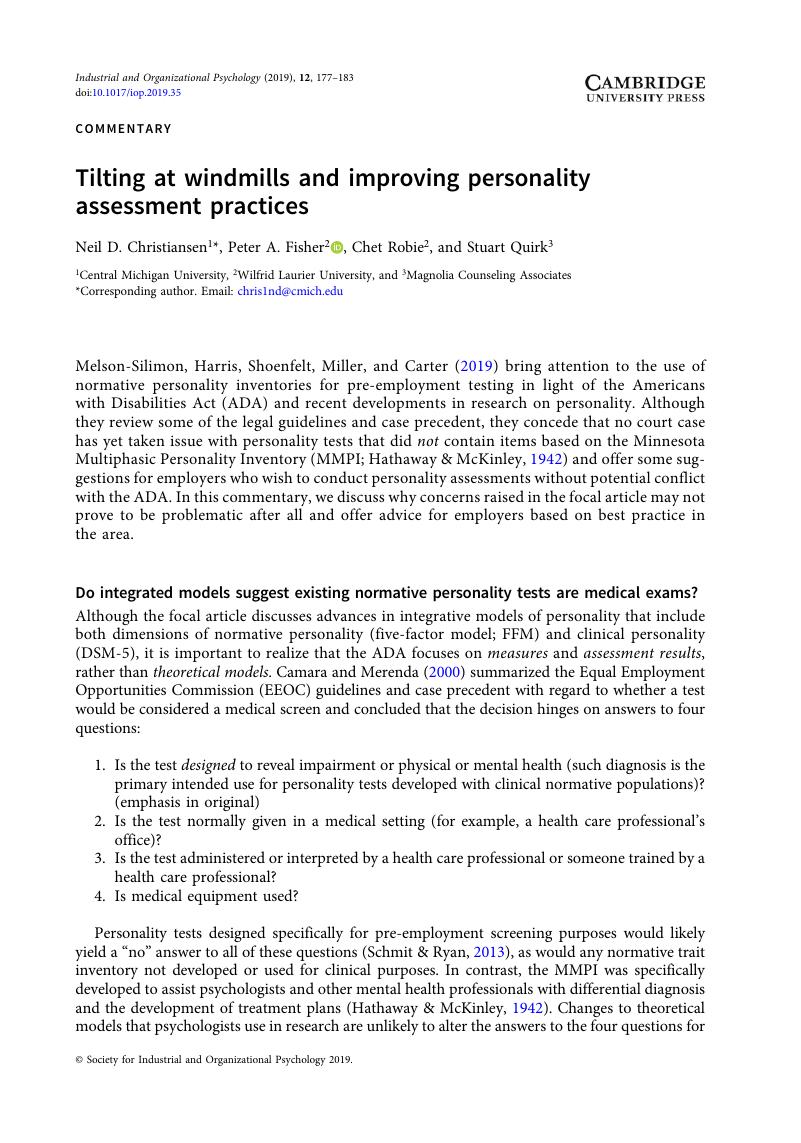Simpson, D. A.,
Christiansen, N. D.,
Dawson, K. (
2017, April). Occupational differences in the validity of narrow personality traits. Paper presented in J. Johnson (Ed.),
Don’t take quotes or personality assessment validities out of context. Symposium presented at the 32nd Annual Conference of the Society for Industrial and Organizational Psychology, Orlando, FL.
Google Scholar 